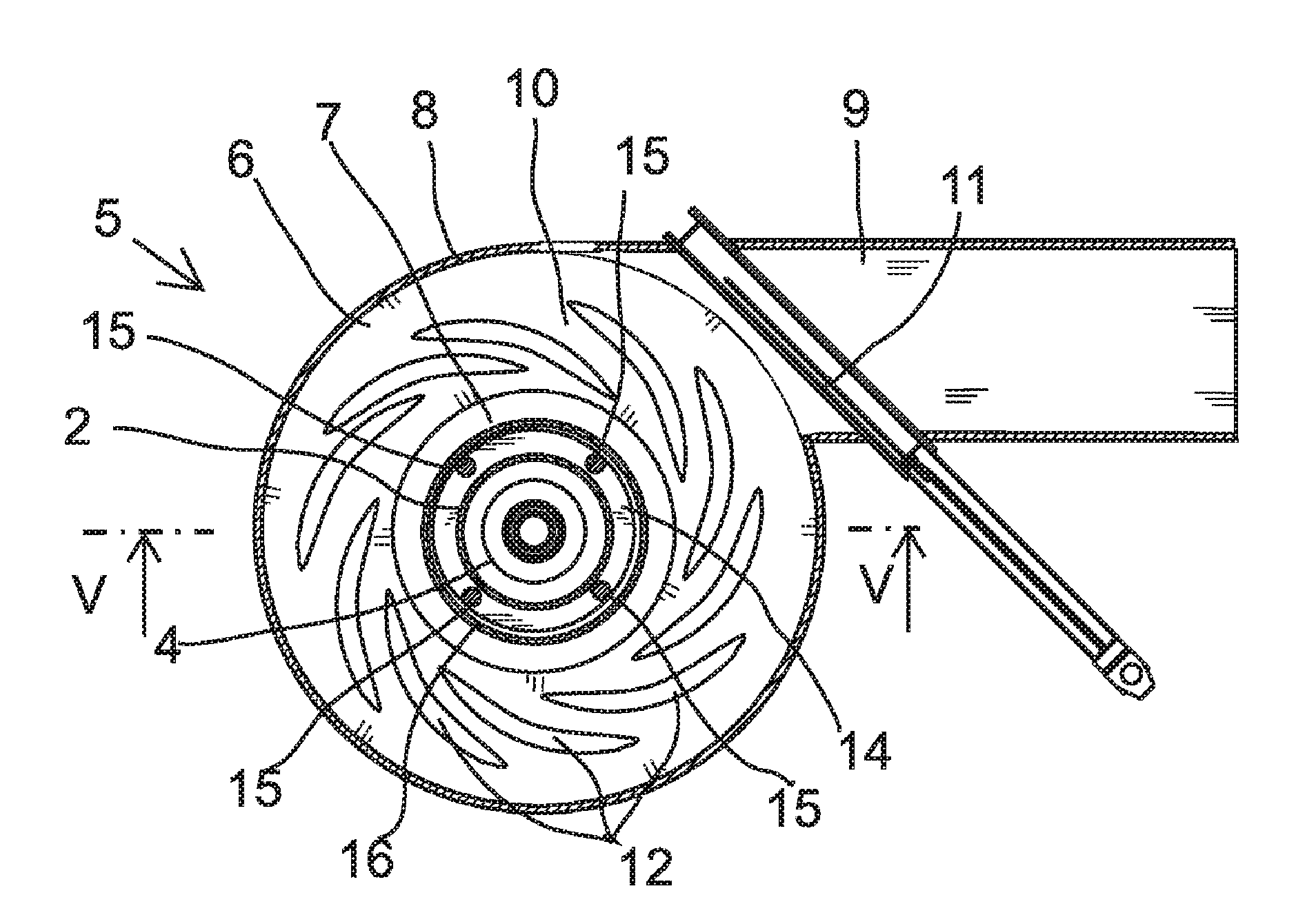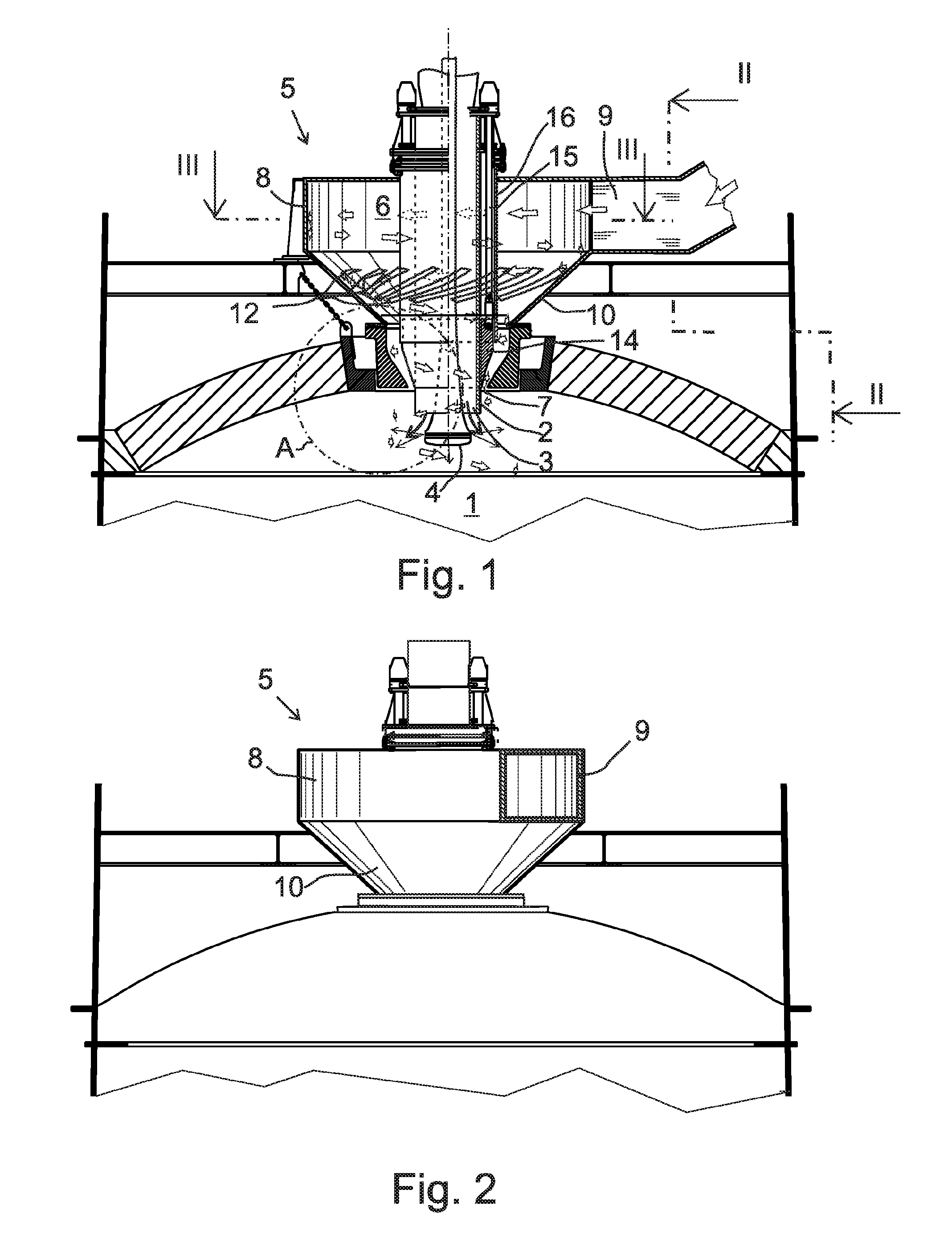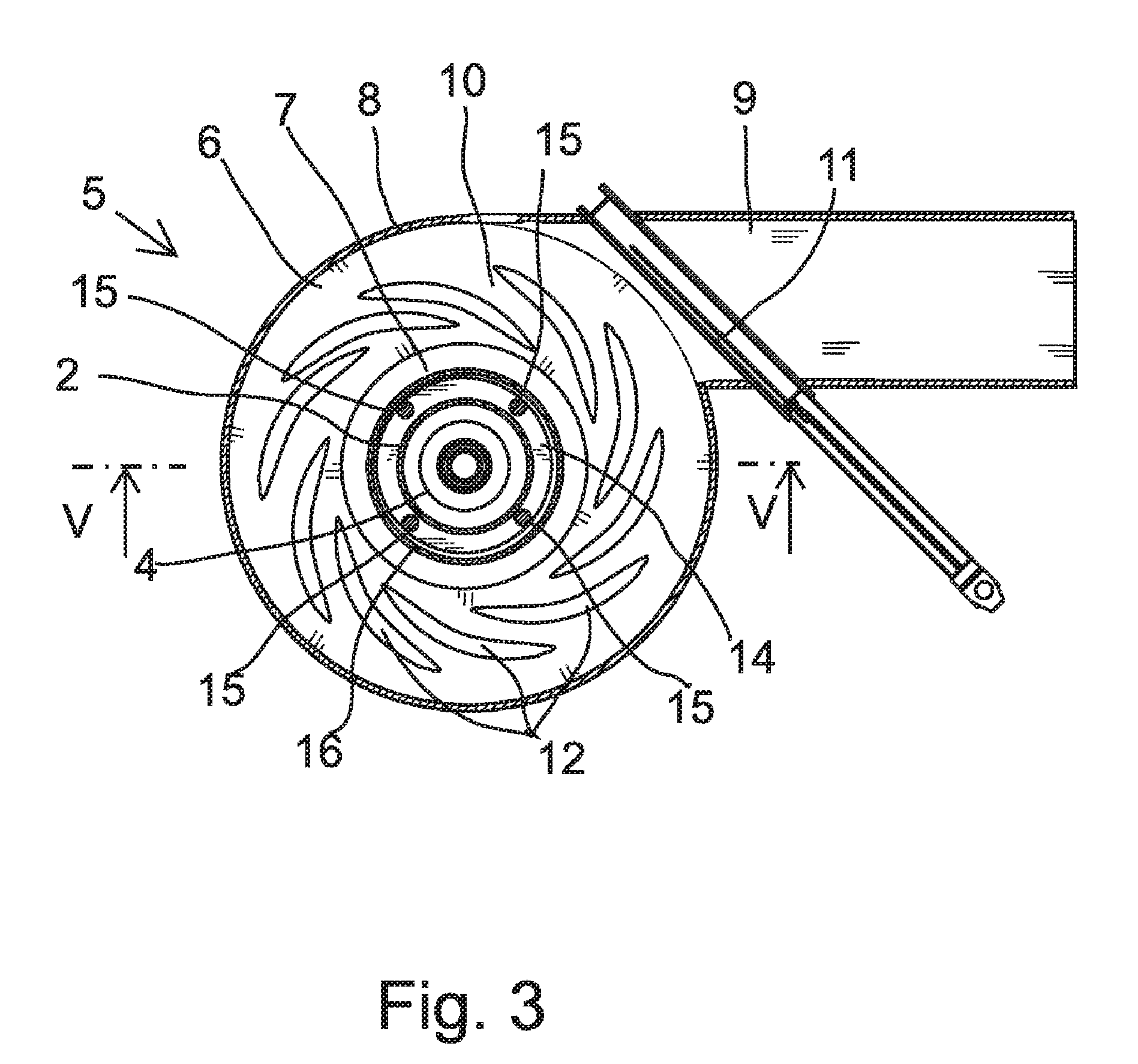Concentrate burner
a burner and concentration technology, applied in the direction of lighting and heating apparatus, blast furnace components, blast furnaces, etc., can solve the problems of affecting the middle part of the shaft, no way of adjusting the amount of turbulence, etc., to facilitate the removal of agglomerations, improve the stability of the flame, and optimal swirl angle for the reaction gas
- Summary
- Abstract
- Description
- Claims
- Application Information
AI Technical Summary
Benefits of technology
Problems solved by technology
Method used
Image
Examples
Embodiment Construction
[0028]FIG. 1 shows a concentrate burner that is installed in the upper part of the reaction shaft 1 of a flash smelting furnace to feed pulverous concentrate mixture and reaction gas to the reaction shaft 1 of the flash smelting furnace.
[0029]The concentrate burner includes a feeder pipe 2, its orifice 3 opening to the reaction shaft for feeding the concentrate mixture into the reaction shaft 1. Inside the feeder pipe 2, there is a dispersing device 4 that is placed concentrically, extending to a distance from the orifice 3 towards the inside of the reaction shaft 1. The dispersing device 4 directs the gas that is fed through it from the lower edge of the device to the side towards the flow of solid matter that is directed downwards outside the dispersing device. Furthermore, the concentrate burner includes a gas supply device 5 for feeding the reaction gas into the reaction shaft 1. The gas supply device includes a reaction gas chamber 6, which is located outside the reaction shaft...
PUM
| Property | Measurement | Unit |
|---|---|---|
| Angle | aaaaa | aaaaa |
| Angle | aaaaa | aaaaa |
| Angle | aaaaa | aaaaa |
Abstract
Description
Claims
Application Information
 Login to View More
Login to View More - R&D
- Intellectual Property
- Life Sciences
- Materials
- Tech Scout
- Unparalleled Data Quality
- Higher Quality Content
- 60% Fewer Hallucinations
Browse by: Latest US Patents, China's latest patents, Technical Efficacy Thesaurus, Application Domain, Technology Topic, Popular Technical Reports.
© 2025 PatSnap. All rights reserved.Legal|Privacy policy|Modern Slavery Act Transparency Statement|Sitemap|About US| Contact US: help@patsnap.com



